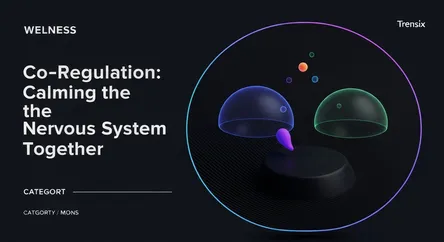Wellness
Co-Regulation: Calming the Nervous System Together

Discover how co-regulation, the process of syncing nervous systems with others, is key to managing stress and fostering emotional well-being.
What is it?
Co-regulation is the process of managing your emotional and physiological state through connection with another person. It's an interactive process where one person’s nervous system can calm another's, creating a sense of safety and balance. This isn't just a psychological concept; it's a biological one where our bodies unconsciously affect each other. We are born requiring this connection, as infants rely on caregivers to soothe them and meet their needs, which lays the foundation for developing self-regulation—the ability to manage one's own emotions—later in life.
Why is it trending?
The concept of co-regulation is gaining traction as society places a greater emphasis on mental health, trauma-informed care, and understanding the nervous system. In a world of increasing stress and digital isolation, people are seeking authentic connection. Co-regulation offers a tangible way to understand how relationships directly impact our well-being. It's also becoming a popular term in modern parenting and therapy, highlighting that emotional regulation isn't just an individual task but a shared experience that builds resilience and healthier bonds.
How does it affect people?
Co-regulation is fundamental to our emotional health. Through supportive interactions like active listening, a soothing tone of voice, or a comforting touch, it helps to lower stress and anxiety. When we co-regulate with someone we trust, our brains can release hormones like oxytocin, which promotes feelings of connection and reduces the "fight or flight" response. This process not only helps us navigate difficult moments but also strengthens relationships, improves mental resilience, and fosters a deeper sense of security and belonging.